Hallberg-Rassy 310
Sailboat specifications
The Hallberg-Rassy 310 is a 30’11” (9.42m) cruising sailboat designed by Frers Naval Architecture & Engineering (Argentina). She is built since 2009 by Hallberg-Rassy (Sweden).
Hallberg-Rassy 310's main features
- Model
- Hallberg-Rassy 310
- Hull type
- Monohull
- Category
- Cruising sailboat
- Sailboat builder
- Sailboat designer
- Country
- Sweden
- Construction
- GRP (glass reinforced polyester):
Sandwich fiberglass polyester - First built hull
- 2009
- Last built hull
- Still in production
- Appendages
- Keel : L-shaped keel (with bulb)
- Helm
- Single tiller
- Rudder
- Single spade rudder
- Unsinkable
- No
- Trailerable
- No
- EC design categoryiThe CE design category indicates the ability to cope with certain weather conditions (the sailboat is designed for these conditions)
A: Wind < force 9, Waves < 10m
B: Wind < force 8, Waves < 8m
C: Wind < force 6, Waves < 4m
D: Wind < force 4, Waves < 0,5m - A
- Standard public price ex. VAT (indicative only)
- About152 000 €(2020)
Hallberg-Rassy 310's main dimensions
- Hull length
- 30’ 11”9.42 m
- Waterline length
- 28’ 11”8.8 m
- Beam (width)
- 10’ 5”3.18 m
- Draft
- 5’ 11”1.8 m
- Mast height from DWL
- 47’ 1”14.35 m
- Light displacement (MLC)
- 9590 lb4350 kg
- Ballast weight
- 3704 lb1680 kg
- Ballast type
- Lead on deep GRP bilge
Hallberg-Rassy 310's rig and sails
- Upwind sail area
- 508 ft²47.2 m²
- Downwind sail area
- 767 ft²71.3 m²
- Mainsail area
- 274 ft²25.5 m²
- Genoa area
- 234 ft²21.7 m²
- Code 0 area
- 493 ft²45.8 m²
- Rigging type
- Sloop Marconi 9/10
- Mast configuration
- Deck stepped mast
- Rotating spars
- No
- Number of levels of spreaders
- 2
- Spreaders angle
- Swept-back
- Spars construction
- Aluminum spars
Hallberg-Rassy 310's performances
- Upwind sail area to displacementiThe ratio sail area to displacement is obtained by dividing the sail area by the boat's displaced volume to the power two-thirds.
The ratio sail area to displacement can be used to compare the relative sail plan of different sailboats no matter what their size.
Upwind: under 18 the ratio indicates a cruise oriented sailboat with limited performances especially in light wind, while over 25 it indicates a fast sailboat. - 191 ft²/T17.71 m²/T
- Downwind sail area to displacementiThe ratio sail area to displacement is obtained by dividing the sail area by the boat's displaced volume to the power two-thirds.
The ratio sail area to displacement can be used to compare the relative sail plan of different sailboats no matter what their size. - 288 ft²/T26.76 m²/T
- Displacement-length ratio (DLR)iThe Displacement Length Ratio (DLR) is a figure that points out the boat's weight compared to its waterline length. The DLR is obtained by dividing the boat's displacement in tons by the cube of one one-hundredth of the waterline length (in feet).
The DLR can be used to compare the relative mass of different sailboats no matter what their length:
a DLR less than 180 is indicative of a really light sailboat (race boat made for planning), while a DLR greater than 300 is indicative of a heavy cruising sailboat. - 181
- Ballast ratioiThe Ballast ratio is an indicator of stability; it is obtained by dividing the boat's displacement by the mass of the ballast. Since the stability depends also of the hull shapes and the position of the center of gravity, only the boats with similar ballast arrangements and hull shapes should be compared.
The higher the ballast ratio is, the greater is the stability. - 39 %
- Critical hull speediAs a ship moves in the water, it creates standing waves that oppose its movement. This effect increases dramatically the resistance when the boat reaches a speed-length ratio (speed-length ratio is the ratio between the speed in knots and the square root of the waterline length in feet) of about 1.2 (corresponding to a Froude Number of 0.35) . This very sharp rise in resistance, between speed-length ratio of 1.2 to 1.5, is insurmountable for heavy sailboats and so becomes an apparent barrier. This leads to the concept of "hull speed".
The hull speed is obtained by multiplying the square root of the waterline length (in feet) by 1.34. - 7.20 knots
Hallberg-Rassy 310's auxiliary engine
- Engine(s)
- 1 inboard engine
- Engine(s) power
- 19 HP
- Fuel type
- Diesel
- Fuel tank capacity
- 26.4 gal100 liters
Hallberg-Rassy 310's accommodations and layout
- Cockpit
- Closed aft cockpit
- Cabin(s)
- 2
- Berth(s) (min./max.)
- 4 / 6
- Head(s)
- 1
- Freshwater tank capacity
- 52.8 gal200 liters
- Holding tank capacity
- 13.2 gal50 liters
Hallberg-Rassy 310's saloon
- Maximum headroom
- 6’ 1”1.86 m
- Berth length
- 6’ 7”2 m
Hallberg-Rassy 310's fore cabin
- Berth length
- 6’ 10”2.06 m
- Berth width (head/feet)
- 5’ 10”1.76 m / 1’ 2”0.36 m
Hallberg-Rassy 310's aft cabin
- Berth length
- 6’ 10”2.06 m
- Berth width (head/feet)
- 4’ 8”1.43 m / 3’ 4”1 m



Hallberg-Rassy 310 sailplan - - 2/13
Picture extracted from the commercial documentation © Hallberg-Rassy
Picture extracted from the commercial documentation © Hallberg-Rassy
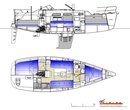

Hallberg-Rassy 310 layout - - 3/13
Picture extracted from the commercial documentation © Hallberg-Rassy
Picture extracted from the commercial documentation © Hallberg-Rassy


Hallberg-Rassy 310 sailing - - 4/13
Picture extracted from the commercial documentation © Hallberg-Rassy
Picture extracted from the commercial documentation © Hallberg-Rassy


Hallberg-Rassy 310 sailing - - 5/13
Picture extracted from the commercial documentation © Hallberg-Rassy
Picture extracted from the commercial documentation © Hallberg-Rassy


Hallberg-Rassy 310 sailing - - 6/13
Picture extracted from the commercial documentation © Hallberg-Rassy
Picture extracted from the commercial documentation © Hallberg-Rassy


Hallberg-Rassy 310 sailing - - 7/13
Picture extracted from the commercial documentation © Hallberg-Rassy
Picture extracted from the commercial documentation © Hallberg-Rassy


Hallberg-Rassy 310 sailing - - 8/13
Picture extracted from the commercial documentation © Hallberg-Rassy
Picture extracted from the commercial documentation © Hallberg-Rassy


Hallberg-Rassy 310 interior and accommodations - - 9/13
Picture extracted from the commercial documentation © Hallberg-Rassy
Picture extracted from the commercial documentation © Hallberg-Rassy
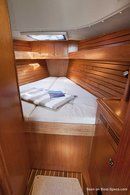

Hallberg-Rassy 310 interior and accommodations - - 10/13
Picture extracted from the commercial documentation © Hallberg-Rassy
Picture extracted from the commercial documentation © Hallberg-Rassy
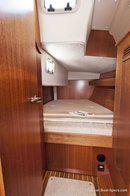

Hallberg-Rassy 310 interior and accommodations - - 11/13
Picture extracted from the commercial documentation © Hallberg-Rassy
Picture extracted from the commercial documentation © Hallberg-Rassy
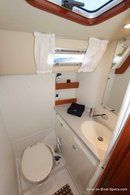

Hallberg-Rassy 310 interior and accommodations - - 12/13
Picture extracted from the commercial documentation © Hallberg-Rassy
Picture extracted from the commercial documentation © Hallberg-Rassy
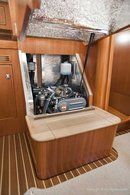

Hallberg-Rassy 310 interior and accommodations - - 13/13
Picture extracted from the commercial documentation © Hallberg-Rassy
Picture extracted from the commercial documentation © Hallberg-Rassy
Similar sailboats that may interest you:
Sailboats
First built hull
Hull length
2005
31’ 7”9.62 m
2013
32’9.75 m
2007
30’ 6”9.3 m
2017
34’10.36 m
2017
32’ 10”9.99 m
1983
30’ 2”9.2 m
2005
31’9.45 m
2008
32’9.74 m
2007
30’ 6”9.3 m
2014
30’ 8”9.35 m
1992
31’ 7”9.62 m
2003
32’9.75 m
2014
32’ 8”9.98 m
2005
33’ 11”10.32 m
2003
32’9.75 m